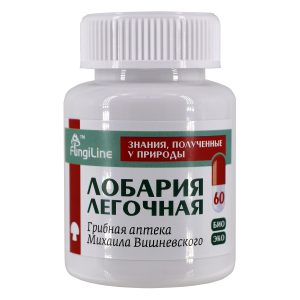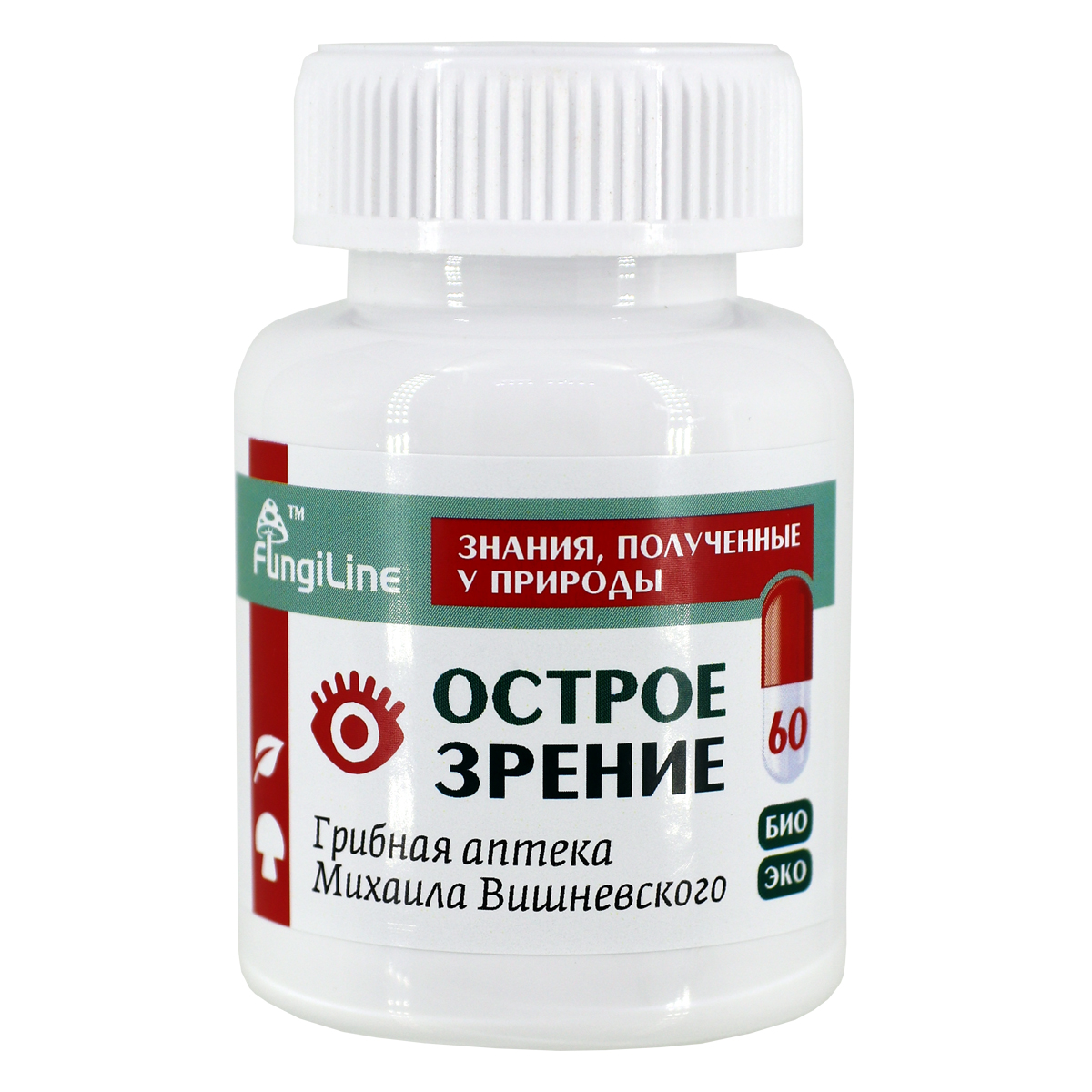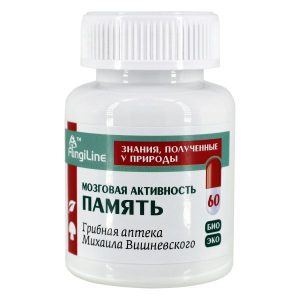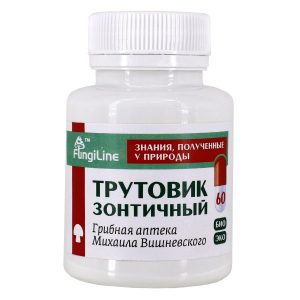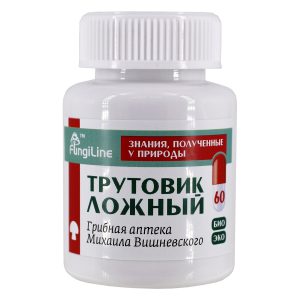Subtotal: 13200 ₸
Healthy vision • 60 capsules
7200 ₸
The natural ingredients included in the drug increase visual acuity, relieve inflammation of the mucous membrane of the eyes, strengthen the eye muscles and prevent clouding of the lens and solve problems with eye pressure.
- Chanterelle and morel increase visual acuity
- Chanterelle prevents visual disturbances and inflammation of the mucous membrane of the eyes
- Morel strengthens the eye muscles and prevents clouding of the lens, provides a pro-inflammatory effect
- Ginkgo prevents cataracts and solves problems with eye pressure
Yellow chanterelle (Cantharellus cibarius) powder of fruit bodies
Morel tall (Morchella elata) fruit body powder
Ginkgo biloba (Ginkgo biloba) leaf extract
Activated (frozen) fine powders of wild morels and chanterelles, as well as ginkgo leaf extract (solvents – water and ethanol) were used to compile the matrix. Mushrooms are dried at a temperature of 30-35 ° C, which ensures complete preservation of pharmacological qualities. The drug contains a full range of components: polysaccharides, glycoproteins, ergosterol, carotenoids, phytosterols, flavonoids, organic acids, vitamins, trace elements and other bioactive substances that ensure eye health and visual acuity.
The course consists of 60 capsules of 0.44 g of powder in each and is designed for a month of admission. Capsules should be taken two a day, at any time. A break between courses is not required. Preventive use of the course is recommended.
If you have a current medical condition or are taking medications, consult a healthcare professional or a fungotherapist before using this product.
Description
Detailed information about ingredients:
Chanterelle
Chanterelle strengthens the immune system, increases resistance to colds, raises the tone, helps with dermatitis, has bactericidal and antiviral properties and anti-cancer action. Chanterelle is rich in unique compounds that have a beneficial effect on the human body in liver diseases, obesity and hepatitis.
The fruit bodies of chanterelles contain vitamins A, C, D, D2, B1, B2, B3, PP, trace elements (zinc, copper), essential acids, antioxidant carotenoids (beta-carotene, canthaxanthin). For example, there is more vitamin C in chanterelles as a percentage than in oranges. Vitamin A improves vision, prevents eye inflammation, reduces dryness of mucous membranes and skin. The constant use of chanterelles in food can prevent visual disturbances, inflammation of the mucous membrane of the eyes, hemeralopia (chicken blindness). Chinese experts recommend the inclusion of chanterelles in the diet of constantly working at the computer.
Another active substance of chanterelles is ergosterol (K-10), which effectively affects liver enzymes. Therefore, chanterelles are useful for liver diseases such as hepatitis, fatty degeneration, hemangiomas.
Recent studies have shown that the polysaccharide trametonolinic acid present in chanterelles successfully affects hepatitis viruses.
Alcoholic infusions of fruit bodies inhibit the growth of cancer cells.
Chanterelles are also valuable mushrooms due to the monosaccharide D-mannose (chitinmannose). Chitinmannose is a natural anthelmintic, so chanterelle helps to easily get rid of any worm infestations. This polysaccharide is able to break through the outer cover of the worm, penetrate the nerve ganglion and cause blocking of its nervous system. And the disturbed work of the worm’s nervous system leads to the death of the parasite. D-mannose works against helminths that infect animal and human organisms. The effect of D-mannose extends to the eggs and cysts of worms. After all, helminths, being in the body of a person or an animal, constantly lay a huge number of eggs — this is their way of survival. Even if an adult dies, dozens of others will take its place after a while. In this case, the outer shell of the egg or cyst, being subject to dissolution by D-mannose, loses its protective function, which always leads to the death of eggs. It is especially important that the surrounding healthy tissues do not suffer from this death, because standard anthelmintic therapy is carried out with sufficiently toxic drugs that have a large number of side effects and often negatively affects the body. Having no serious side effects, chanterelle extracts compare favorably with conventional antiparasitic therapy.
In addition to D-mannose, there are other polysaccharides in the common chanterelle — β-glucans, which trigger a specific antiparasitic defense mechanism in the body. It consists in the activation of specific leukocytes — eosinophils, which are capable of destroying both small parasites and even large worms. Eosinophils have a substance (protein) known as MBP (from eng. Major Basic Protein) contained in eosinophil granules. After activation, the eosinophils begin their attack, releasing MBP near the helminth and damaging the external membrane of the parasite, literally “piercing” it.
Anthelmintic preparations from chanterelles are especially effective in enterobiosis, teniosis, trichocephalosis, ascariasis, opisthorchiasis, clonorhosis, schistosomiasis and giardiasis.
Earlier it was read that the chanterelle is able to remove radionuclides from the body, but now it has been established that this is not the case. On the contrary, chanterelle is capable of accumulating and containing radionuclides, especially caesium-137.
In folk medicine, alcohol tincture is used against helminths.
In China, fresh chanterelles are prescribed for night blindness, ophthalmia (eye inflammation), dry skin and respiratory tract infections.
In Latvia, extracts from fresh or dried chanterelles are used for tonsillitis, furunculosis, abscesses and tuberculosis.
Morel high
Fruit bodies of morels contain a huge amount of trace elements, primarily metals. Among the detected trace elements: Ag, Al, As, B, Ca, Cd, Cr, Cu, Fe, Ga, K, Li, Mg, Mn, Na, Ni, P, Pb, Se, Sr and Zn.
Laboratory studies conducted on rodents have shown that morel polysaccharides have antitumor (ethanol extract), immunomodulatory, antiviral and restorative activities. Alcoholic extracts of fruit bodies have high antioxidant properties and activity against Dalton’s lymphoma.
50% ethanol extract of edible morel mycelium grown in a semi-submerged culture has shown efficacy against acute inflammation caused by the use of carrageenan and chronic inflammation induced by formalin. Such activity is comparable to the action of the best modern anti-inflammatory drugs, for example, diclofenac. Morel extracts have a hepatoprotective effect and antiviral activity.
An immunostimulating high molecular weight galactomannated polysaccharide was isolated from fresh fruit bodies. This polysaccharide, which makes up 2% of the dry weight of fruit bodies, contains 62.9% mannose, 20.0% galactose and a small amount of N-acetyl-glucosamine, glucose and rhamnose. It is believed that it acts directly on the immune zones of the gastrointestinal mucosa, causing the production of lipopolysaccharides in maximum concentration.
Substances have been found in morels that strengthen the muscles of the eyes, as well as prevent clouding of the lens. Currently, the domestic drug “Morel”, used in the fight against cataracts, has been successfully tested. A similar drug has been developed in Kazakhstan.
Tincture of morels, using it externally, treated conjunctivitis, and taking it inside, fought with myopia, hyperopia and cataracts. In some villages, morels were dried by harvesting them for the winter, then they were made into powder and added to food all year until the next harvest as a prevention or treatment of eye diseases. In the Novgorod birch bark certificates, archaeologists were interested in the scrolls found under the church of St. Panteleimon: they indicated a “plan” for the monastery to collect medicinal mushrooms (chaga and morels). These certificates were called “mushroom”, they contain recipes — how and for what diseases medicinal mushrooms should be used. Morels were recommended for the treatment of vision. They treated myopia, age-related hyperopia and cataracts.
Ginkgo double-bladed
Ginkgo leaves contain flavonoids, bioflavonoids, diterpenoids, ginkgolides, procyanidins, lactones, bilobalide, terpenes, acids, starch, B-sitosterol.
Ginkgo extract is known as a means to improve memory, concentration, and improve brain activity. Ginkgo improves blood supply to the brain, activates thought processes, increases the elasticity of the walls of blood vessels of the brain. Ginkgo preparations are used by people of creative professions (musicians, writers, scientists, doctors), people of professions where high concentration of attention is needed (air traffic controllers, drivers, programmers), and elderly people suffering from memory loss.
Contraindications for taking ginkgo: peptic ulcer of the stomach and duodenum in the acute stage, acute cerebrovascular accident, acute myocardial infarction, low blood pressure, pregnancy, lactation.

